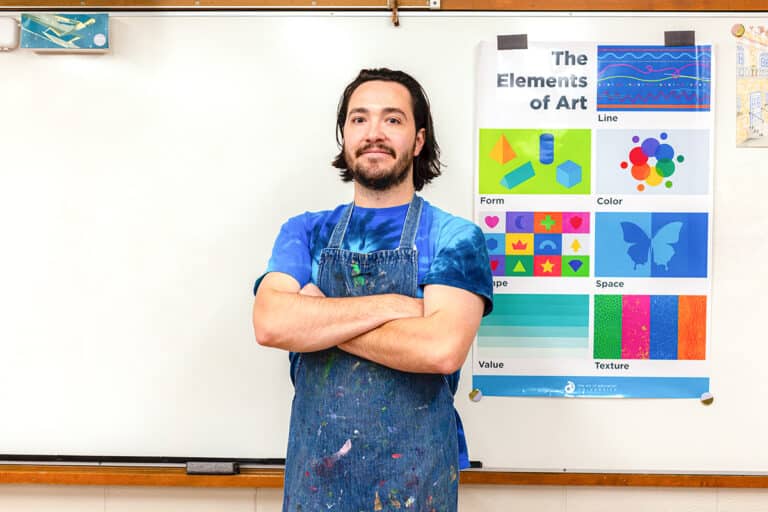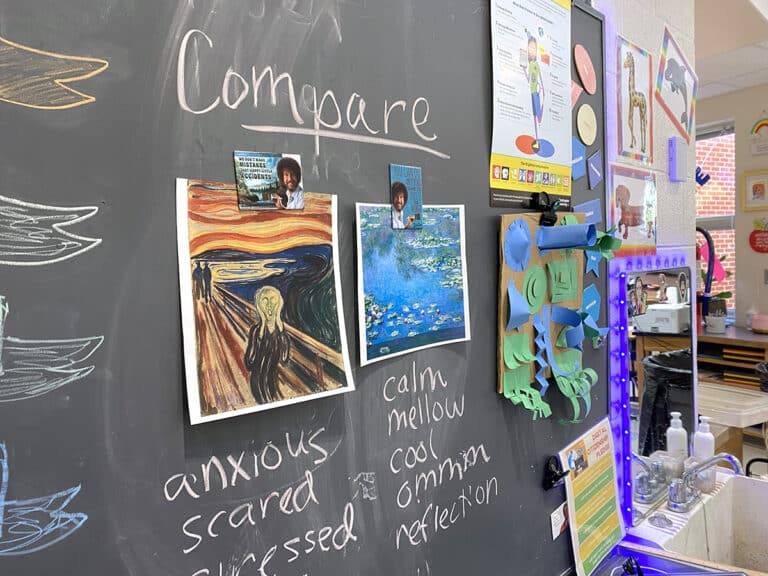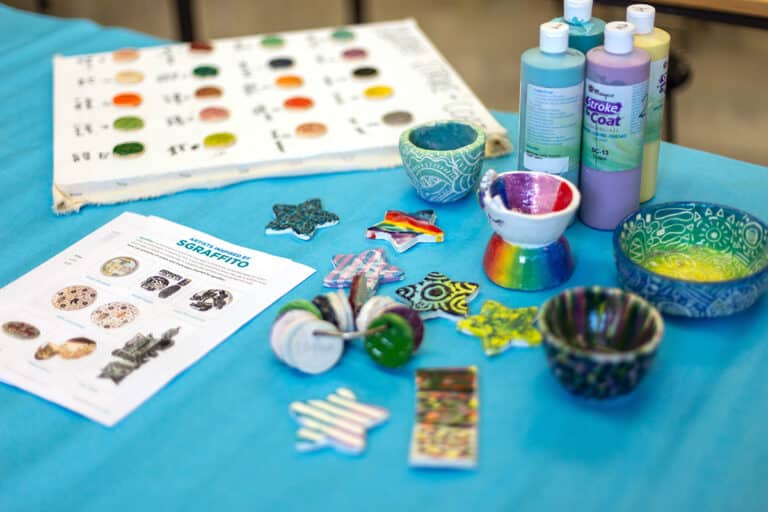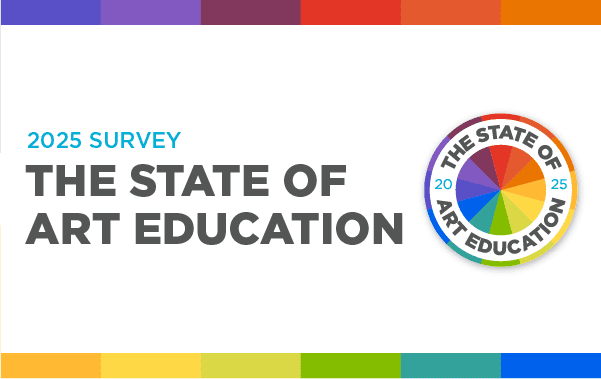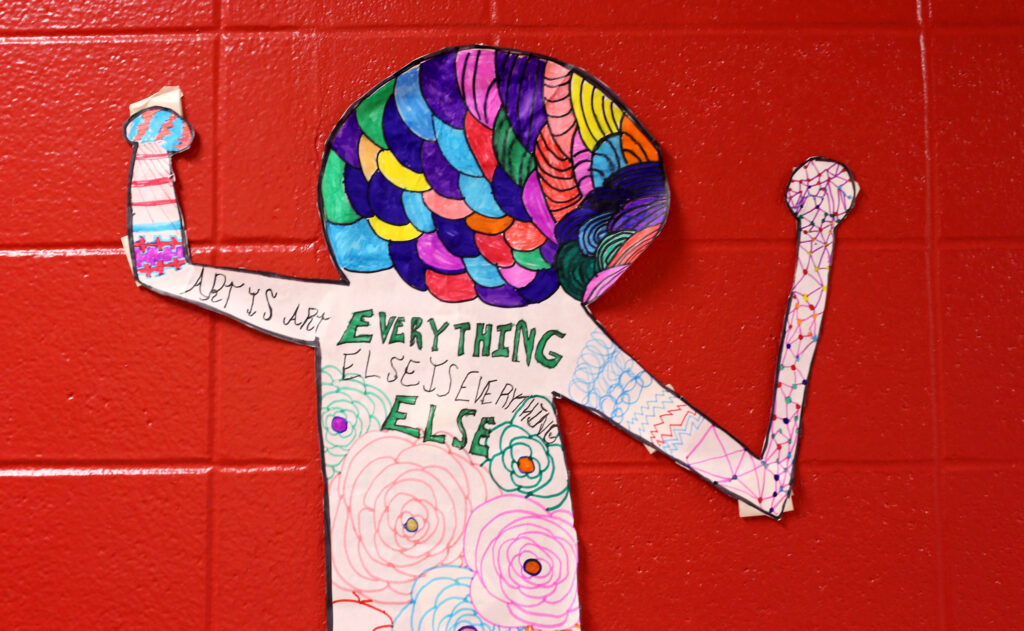
We’ve all had classes that are a bit tougher to work with. You pull out all your best lessons and teacher tricks, but the class in mind just isn’t falling for it. Instead of throwing your hands up in the air in surrender, check out this collaborative project that brings groups together, digs further into your curriculum, promotes the arts, and whips into shape even your most unruly artists.
I chose to do this collaborative piece with my oldest elementary students, but truthfully it could be done with middle and high school students, too.
Collaborative Artwork Steps
1. Hook Your Students
This particular project revolves around Keith Haring, a popular artist to study at the elementary level, but I was a little tired of doing the same old figure lesson with contour rhythm lines. Can I get an AMEN?!
As I studied Haring, it became clear that he didn’t constrict his drawings to a 9 x 12 piece of construction paper. He had BIGGER ideas and worked on a much larger scale, even if his canvas choices weren’t always legal.
To hook my students, I used the idea of storytelling. I learned in Managing the Art Room that storytelling can help engage even the most reluctant students. Boy, did it work! What student doesn’t love hearing the compelling tale of Keith Haring and his many encounters with the law? It was also a great platform for discussing the ethics of Haring’s art and asking the question, “Is it even art at all?”
2. Have Students Team Up and Sketch
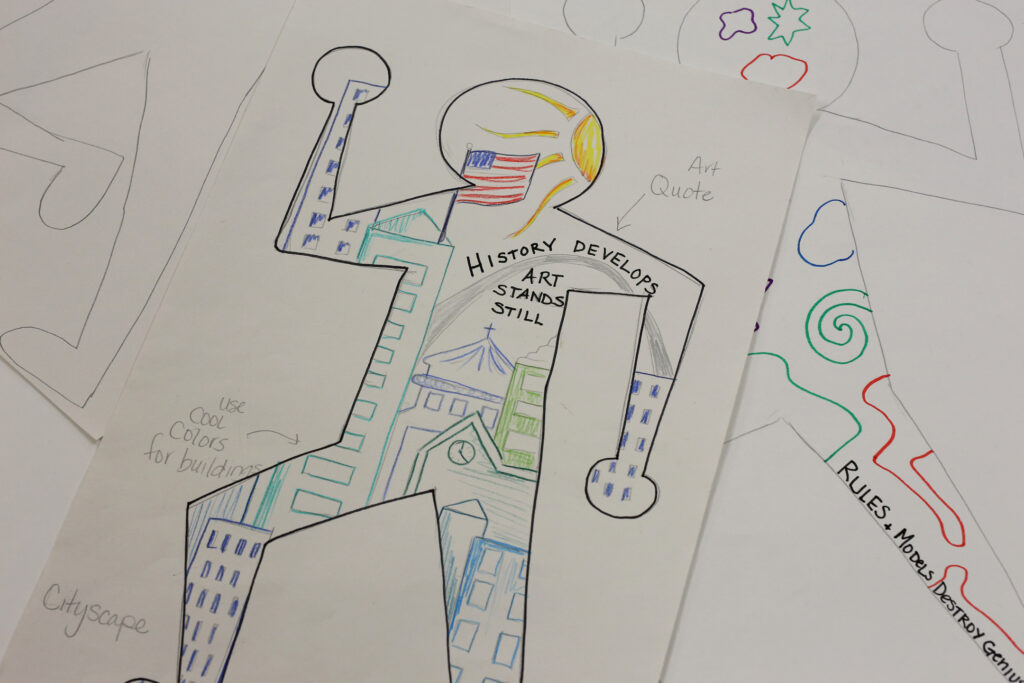
Often teachers feel rushed to get right to the main creations, but for this particular project, students were required to team up and prepare a plan of action.
Table groups were given a 9 x 18 piece of white paper and asked to collectively draw one of Keith Haring’s famous figures. They followed along as I demonstrated drawing a figure using the document camera. Every team member had to participate in the sketch. Those who felt less confident in their drawing skills acted as models helping their team position their figure.
Once the sketch was complete, the groups were given a roll of white craft paper covering their entire table. Their goal was to transfer the small sketch figure onto the large paper by increasing the original scale substantially.
3. Have Students Make a Plan
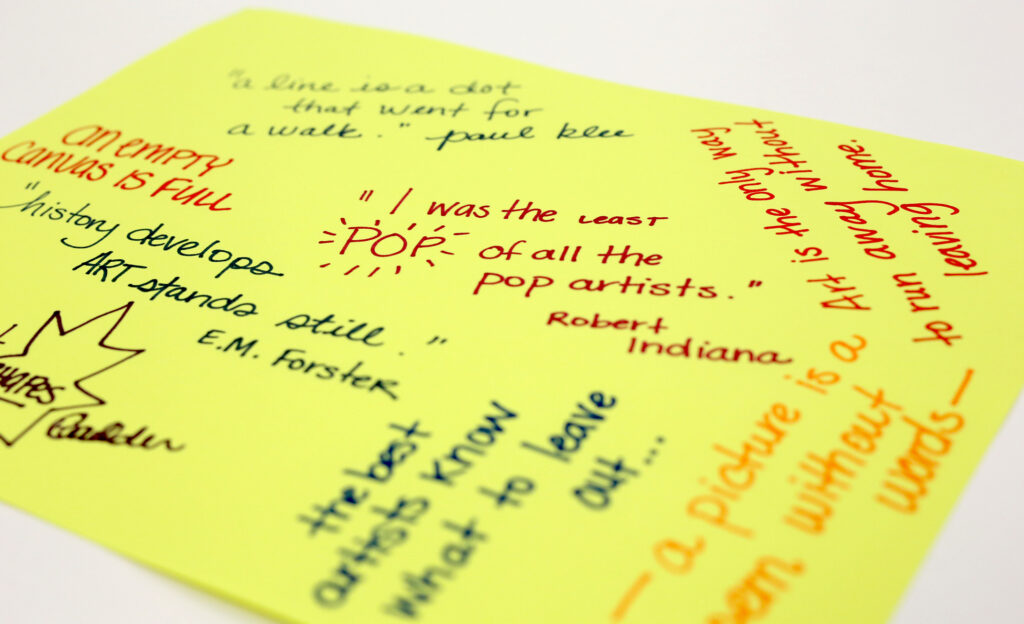
The following week I released more information on the project. Just as Haring tried to send a message to the daily commuters through his artwork, my students were going to send a message about art to the hallways of our school. We wanted our school to know, “Art matters!”. As part of their assignment, teams had to use one curriculum concept they learned in all their years of art and include an art-related quote.
Teams were given a large list of quotes and curriculum inspiration sheets to help them choose. Once a consensus was reached by all members of the team, they started to sketch out a plan using their original small figure.
4. Have Students Add Color
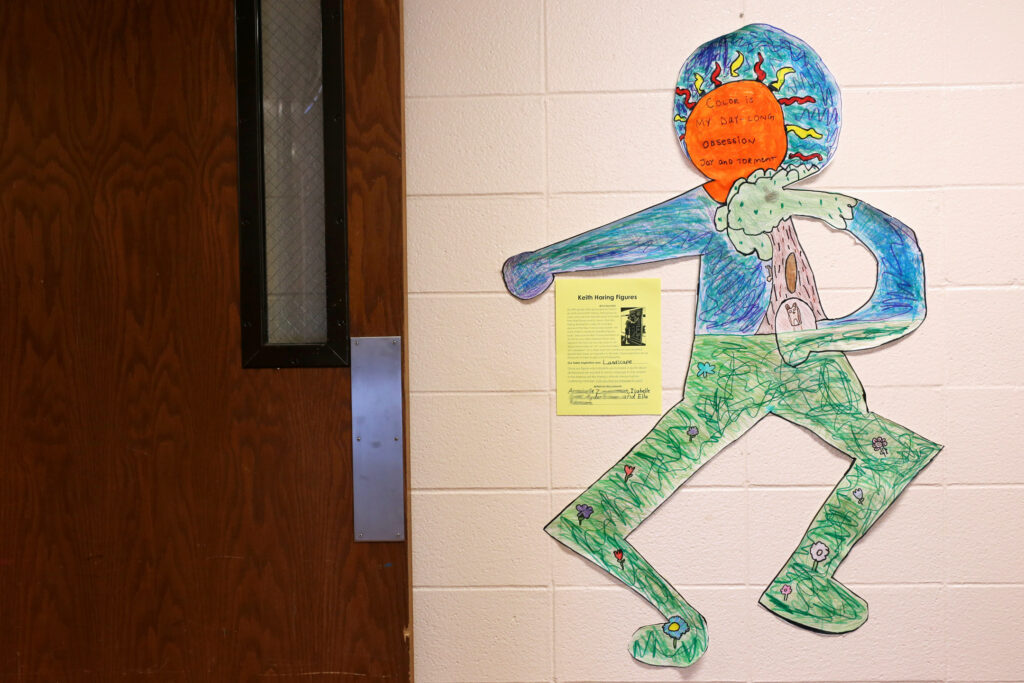
After their plan was “teacher approved,” students transferred their ideas onto the large figure. Some groups worked on one area together, others divided up the figure and conquered their sections individually.
When figures were ready for color, the teams had to come to a consensus about the use of materials and colors. Teams were given the materials of their choosing and continued to work on their figures for the next few class periods.
5. Let Students Install the Figures
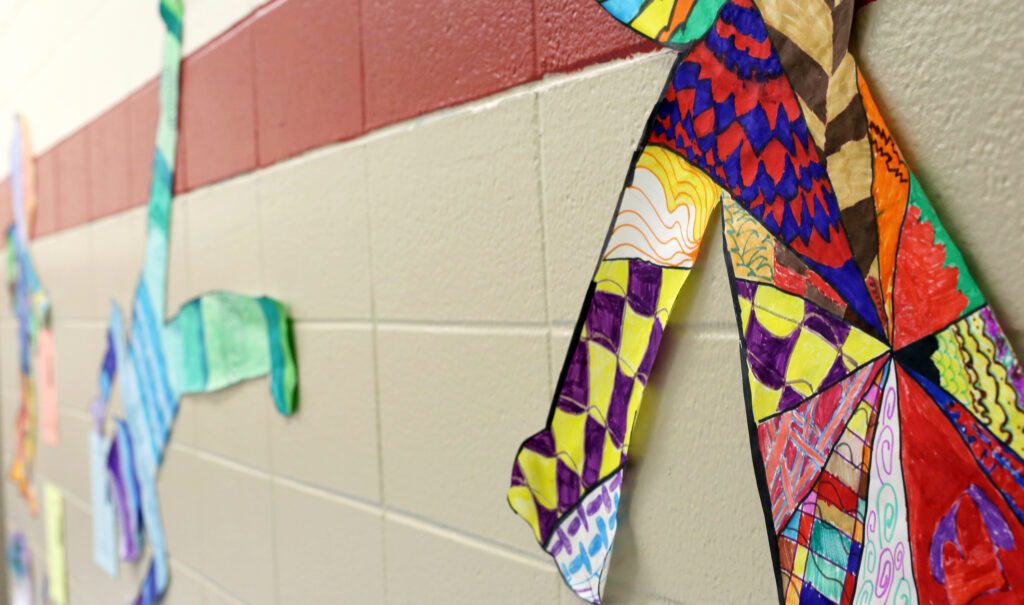
When teams were finished, the figures were carefully cut out and artist statements were constructed to accompany their art. We had a class discussion about appropriate and inappropriate places in the school to hang art. (It was a great time to revisit some of Haring’s display choices!) Teams collaboratively decided on a location and were released into the hallways to install their figures using masking tape.
The project took about four hours to complete from start to finish, but the time was worth the wonderful outcome. Students seemed more united, the curriculum was revisited in an interesting way, and our school community embraced the project.
The day after the figures were installed I received these emails in my inbox from teachers and parents:
“Hey everyone, be sure to check it out! Love the Keith Haring figures in the hall. They are GREAT!!!!”
“I toured the hallways this morning with my kindergartner. He wanted to know which grade had made the figures so he would know when he could do them. He was really excited about them! They are awesome!”
If you’ve ever wanted to try out a collaborative project that advocates for the arts and revisits your curriculum, this might be the project for you. If you have a class that just can’t seem to work together, then perhaps teaming them up for this lesson will be the inspiration they need get along. Whatever the case, we hope this collaborative effort is just what you’ve been searching for.
What collaborative projects have you tried out this year? Pictures are welcome!
Do you incorporate any projects that advocate for the arts? Share your lessons with us!
Magazine articles and podcasts are opinions of professional education contributors and do not necessarily represent the position of the Art of Education University (AOEU) or its academic offerings. Contributors use terms in the way they are most often talked about in the scope of their educational experiences.


